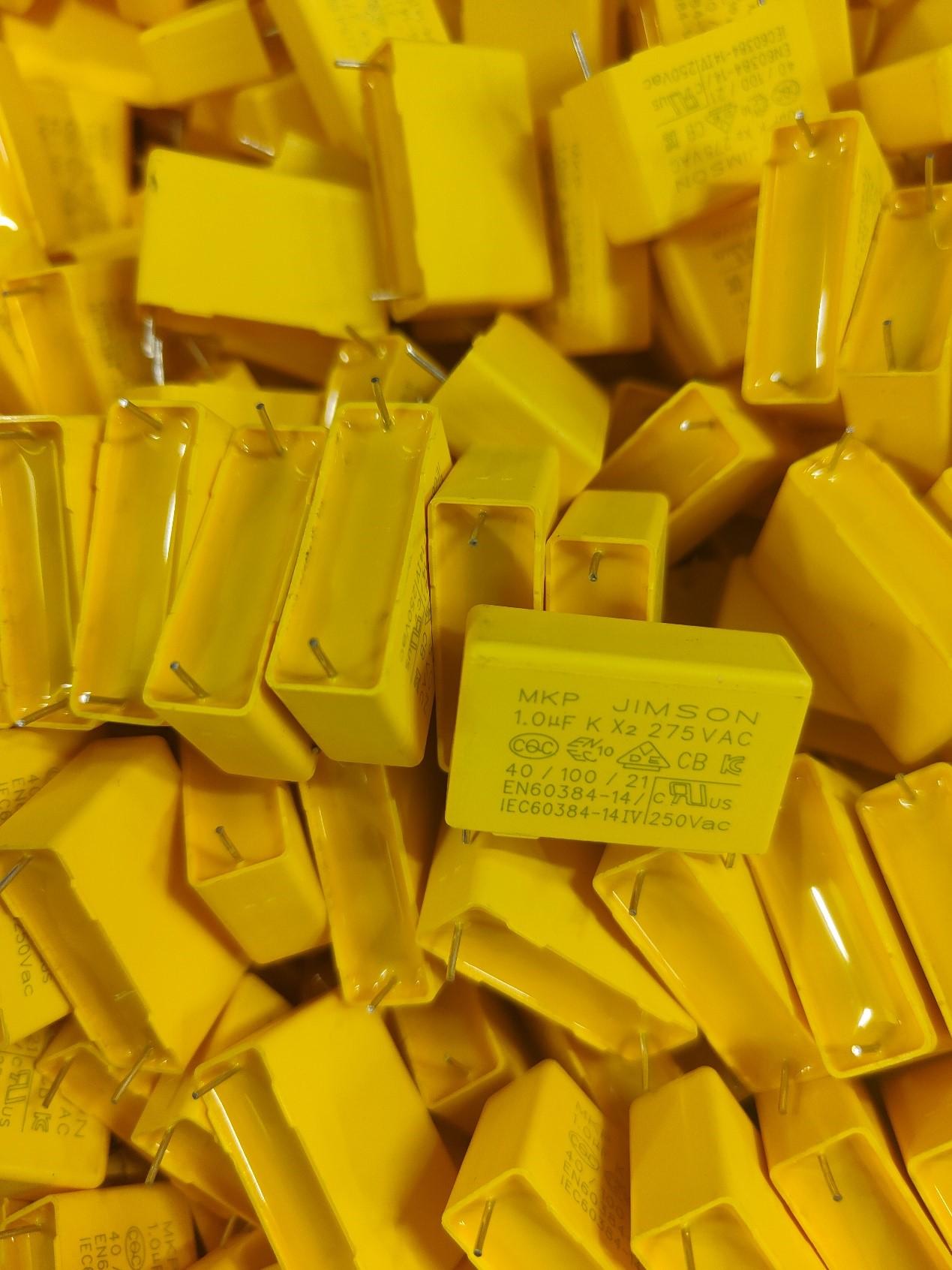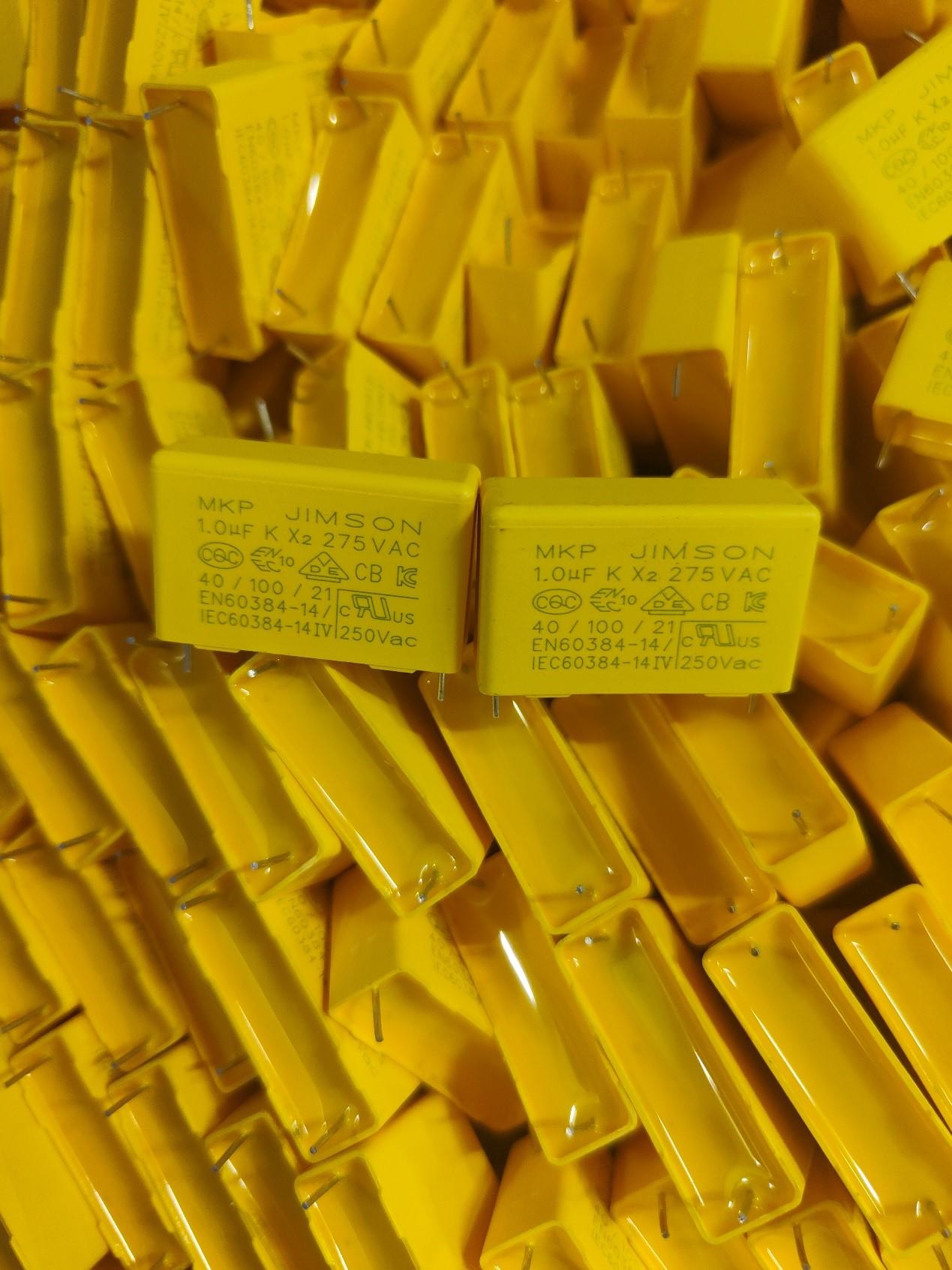Common Uses: Standard X2 is used in parallel over the mains to cut down on grid electromagnetic interference. The capacitor has tiny loss, outstanding electrical performance, high reliability, and self-healing capabilities. Their primary objective is to safeguard the gadget by blocking interferences and suppressing them.
The capacitor is made of metallized polypropylene film series, which has tiny loss, outstanding electrical performance, high reliability, and self-healing capabilities. It can withstand high voltage and big current impact.
Common Uses: Standard X2 is used in parallel over the mains to cut down on grid electromagnetic interference. They must adhere to the relevant EMC standards and guidelines for these uses.
Set the multimeter to read in the high ohms region, between 10k and 1m ohms, to test the capacitor. Connect the meter leads—red to positive and black to negative—to the capacitor’s corresponding leads. The meter should begin at zero and gradually increase to infinity.
They are often placed immediately at a device’s input or output in parallel with the supply mains. Their primary objective is to safeguard the gadget by blocking outside interferences and suppressing them. Additionally, they eliminate any interferences that the gadget itself may generate.

Application
1.Line-by-pass and Antenna coupling
2.Across-the-line, spark killer
3. FMI filter
4. Switching power supply

Specifications:
Dielectric: Polypropylene film
Electrodes: Vacuum evaporated metal
Coating: Encapsulated in reinforced flame retardant plastic case sealed with epoxy resin meeting the requirement of UL94V-0.
Leads: Radial leads of tinned wire/ insulation flexible wire
Reference standard: IEC 60384-14 (3nd Edition,2005) UL1414,UL1283,GB/T 14472-1998,EN60384-14
Climatic catalogue: 40/100/21 (GMF)
Capacitance versus rated voltage:
0.001µF-4.7µF/275VAC (50/60Hz)
0.001µF-4.7µF/310VAC (50/60Hz), (UL)
Capacitance tolerance: M ±20% K ± 10% J ± 5%
Dissipation factor (tangent of loss): ≤0.1% (at 20℃ , 1KHz)
Voltage-proof:
4.3*UR Unit VDC (1minute at 20℃ )
Insulation resistance:
C ≤0.33μF, IR ≥15,000mΩ, C>0.33μF, IR*C≥5000S (1 minute at 20 and RH≤65%)
These capacitors are directly linked to the AC power input, also known as the AC “line” and the AC “neutral,” in order to carry out their EMI/RFI filtering functions. The capacitors may also be exposed to overvoltages and/or voltage transients, such as lightning strikes and power surges, as a result of their direct connection to the AC voltage. Failure of the capacitor is thus a very probable risk.
A Class-X capacitor, often known as a “across the line capacitor”—the capacitor positioned between the line and the neutral—is prone to fall short when an overvoltage event occurs. An overcurrent protection device, such as a fuse or circuit breaker, would open as a result of this failure. A capacitor that fails in this way won’t put people at risk of getting shocked by electricity.
In more traditional applications, such as filters and audio crossovers, film capacitors can be employed as voltage smoothing capacitors. When necessary, they can be utilized to store energy and release it in the form of a high-current pulse. Pulsed lasers and electrical discharge lights are both powered by high-current electrical pulses.
Jimson’s goal is to provide you with high-quality stacked film capacitor and other products at favorable prices, as well as timely and efficient services. For this reason, Jimson sincerely invites new and old friends who have similar interests or meet by chance. It will be a great honor to contact Jimson at any time!
ABOUT Products
Question ? Contact Now !
2024 Jimson Electronics (Xiamen) Co. Ltd
request a quote